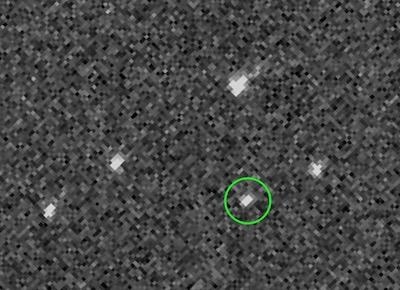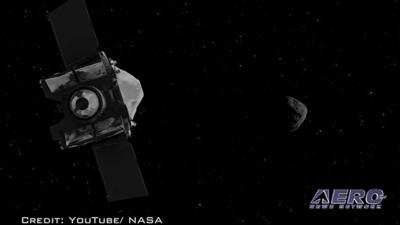Sat, Sep 15, 2018
Takes First Scientific Observations Of Asteroid Bennu
The OSIRIS-REx spacecraft has begun its science mission as it continues to approach near-Earth asteroid Bennu, Space.com reports.

Mission principal investigator Dante Lauretta, a professor of planetary science and cosmochemistry at the University of Arizona's Lunar and Planetary Laboratory, Tweeted "Big day for @OSIRISREx — we start our first science observations — searching for dust plumes around Bennu" on Tuesday.
NASA says that as OSIRIS-REx approaches the asteroid, the spacecraft will use its science instruments to gather information about Bennu and prepare for arrival. The spacecraft’s science payload comprises the OCAMS camera suite (PolyCam, MapCam, and SamCam), the OTES thermal spectrometer, the OVIRS visible and infrared spectrometer, the OLA laser altimeter, and the REXIS x-ray spectrometer.
During the mission’s approach phase, OSIRIS-REx will:
- regularly observe the area around the asteroid to search for dust plumes and natural satellites, and study Bennu’s light and spectral properties;
- execute a series of four asteroid approach maneuvers, beginning on Oct. 1, slowing the spacecraft to match Bennu’s orbit around the Sun;
- jettison the protective cover of the spacecraft’s sampling arm in mid-October and subsequently extend and image the arm for the first time in flight; and
- use OCAMS to reveal the asteroid’s overall shape in late-October and begin detecting Bennu’s surface features in mid-November.
- After arrival at Bennu, the spacecraft will spend the first month performing flybys of Bennu’s north pole, equator, and south pole, at distances ranging between 11.8 and 4.4 miles (19 and 7 km) from the asteroid. These maneuvers will allow for the first direct measurement of Bennu’s mass as well as close-up observations of the surface. These trajectories will also provide the mission’s navigation team with experience navigating near the asteroid.

“Bennu’s low gravity provides a unique challenge for the mission,” said Rich Burns, OSIRIS-REx project manager at NASA’s Goddard Space Flight Center in Greenbelt, Maryland. “At roughly 0.3 miles [500 meters] in diameter, Bennu will be the smallest object that any spacecraft has ever orbited.”
The spacecraft will extensively survey the asteroid before the mission team identifies two possible sample sites. Close examination of these sites will allow the team to pick one for sample collection, scheduled for early July 2020. After sample collection, the spacecraft will head back toward Earth before ejecting the Sample Return Capsule for landing in the Utah desert in Sept. 2023.
(Source: NASA and as cited. Image from file)
More News
Aero Linx: Model Aeronautical Association of Australia MAAA clubs are about fun flying, camaraderie and community. For over 75 years, the MAAA has been Australia’s largest fl>[...]
Touchdown Zone Lighting Two rows of transverse light bars located symmetrically about the runway centerline normally at 100 foot intervals. The basic system extends 3,000 feet alon>[...]
“Discovery and innovation are central to our mission at Virgin Galactic. We’re excited to build on our successful record of facilitating scientific experiments in subor>[...]
How To Get A Story On Aero-TV News/Feature Programming How do I submit a story idea or lead to Aero-TV? If you would like to submit a story idea or lead, please contact Jim Campbel>[...]
Student Pilot Reported That During Rotation, “All Of A Sudden The Back Of The Plane Kicked To The Right..." Analysis: The student pilot reported that during rotation, “>[...]
 ANN's Daily Aero-Linx (05.02.24)
ANN's Daily Aero-Linx (05.02.24) ANN's Daily Aero-Term (05.02.24): Touchdown Zone Lighting
ANN's Daily Aero-Term (05.02.24): Touchdown Zone Lighting Aero-News: Quote of the Day (05.02.24)
Aero-News: Quote of the Day (05.02.24) ANN FAQ: Contributing To Aero-TV
ANN FAQ: Contributing To Aero-TV NTSB Final Report: Cirrus Design Corp SR20
NTSB Final Report: Cirrus Design Corp SR20




